
If you’re fond of Howard Finster, Jules Verne, Grandma Moses, or the improbable discovery of Vivian Maier’s photographs, the story of Charles A. A. Dellschau is a wildly improbable and intoxicating combination of those elements. How so? Born in 1830, Dellschau was a Prussian butcher who emigrated to the U.S. around 1849—upon his retirement a full fifty years later in 1899, he took up an intriguing hobby, to act as draftsman for the “Sonora Aero Club” of Houston, Texas, a club interested in kooky aeronautical crafts about which it is unclear whether it even existed. What is clear is that between the ages of 69 and his death in 1923 at the age of 92, Dellschau filled at least 13 notebooks with approximately 2,500 utterly awesome large-format drawings and collages around the theme of steampunk-ish dirigibles and other flying machines. Rebecca J. Rosen elaborates:
Dealers and historians eventually tracked down some additional Dellschau works, including a series of three journals called Recolections [sic], that also tell the story of the Sonora Aero Club and its inventions, with “ink drawings of fanciful airships that ... look for all the world as if they had flown off the pages of a Jules Verne novel,” as flight historian Tom D. Crouch describes them.
All together, the shoestring-bound books contain some 2,000 pages, each a double-sided collage replete with calligraphy (often in a code that is still today only partially deciphered), drawings, and newspaper clippings. (Dellschau referred to the clippings as “press blooms,” as though they were preserved flowers.) Each page—or “plate,” as Dellschau called them—is dated and numbered, though the counting starts at number 1601. The estimated 10 volumes with the first 1,600 drawings are presumed lost or destroyed.
According to Dellschau’s writings, the club was a secret group of flight enthusiasts who met at Sonora, California in the mid-19th century; one of the members had discovered the formula for an anti-gravity fuel he called “NB Gas.” Anti-gravity fuel! Even if that development never worked out, the vitality and energy of drawings Dellschau made in his 80s would humble most of the twentysomething art school students you would encounter today.
Curiously, there are traces of the Aero Club in lots of places in California—just not in Sonora. According to historian Tracy Baker-White:
“I haven’t found them in Sonora in the 1850s, but I’ve found them in Napa Valley in 1900, or in San Francisco in 1872, or in Stockton in 1872. There are possible links, but there’s nothing that is in Sonora.”
We often use the words “rare,” “unseen,” “unknown” to describe seldom-seen videos or paintings, and often it isn’t quite right, it’s just that very few people have seen them. In the case of Dellschau, however, it really seems to be true that between the years of 1923 and sometime in the 1960s, his work was actually, literally unknown. His works ended up in a landfill, and if not for the eagle eye of used furniture dealer Fred Washington, they’d remain unknown today. Since then, Dellschau’s spectacular works have received their due attention, including exhibitions at the American Folk Art Museum in New York and the Whitechapel Gallery in London. For an overview of Dellschau’s work, see Charles Dellschau by Thomas McEvilley et al.
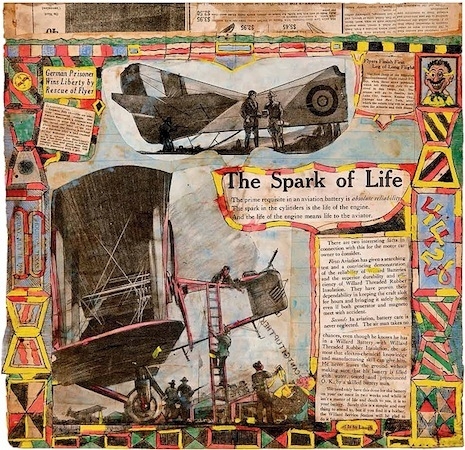
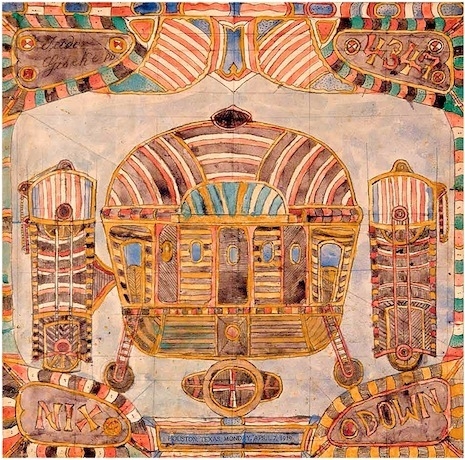
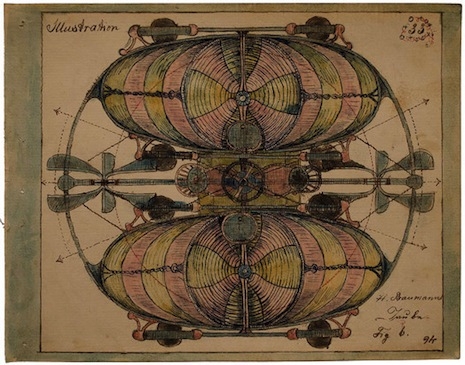
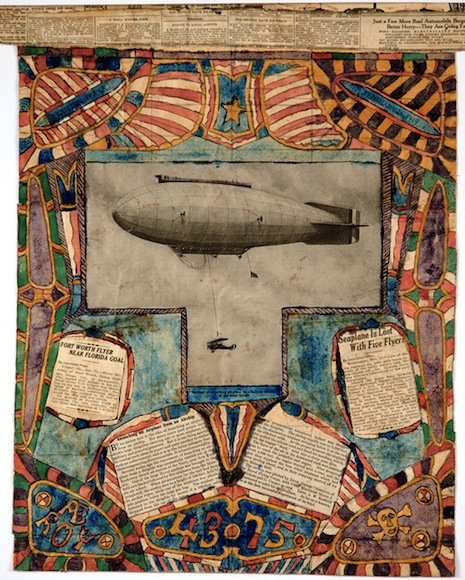
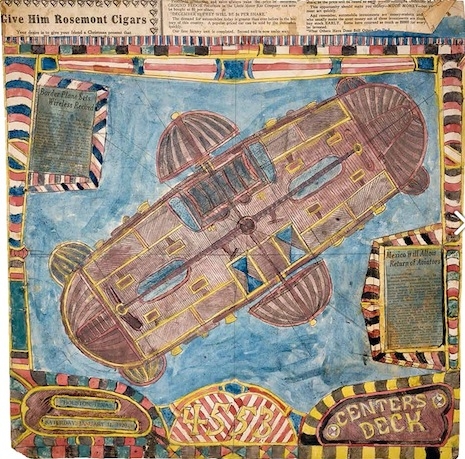
More incredible pics of Dellschau’s work, plus a UFO expert tries to bring Dellschau into the fold—all after the jump…..





